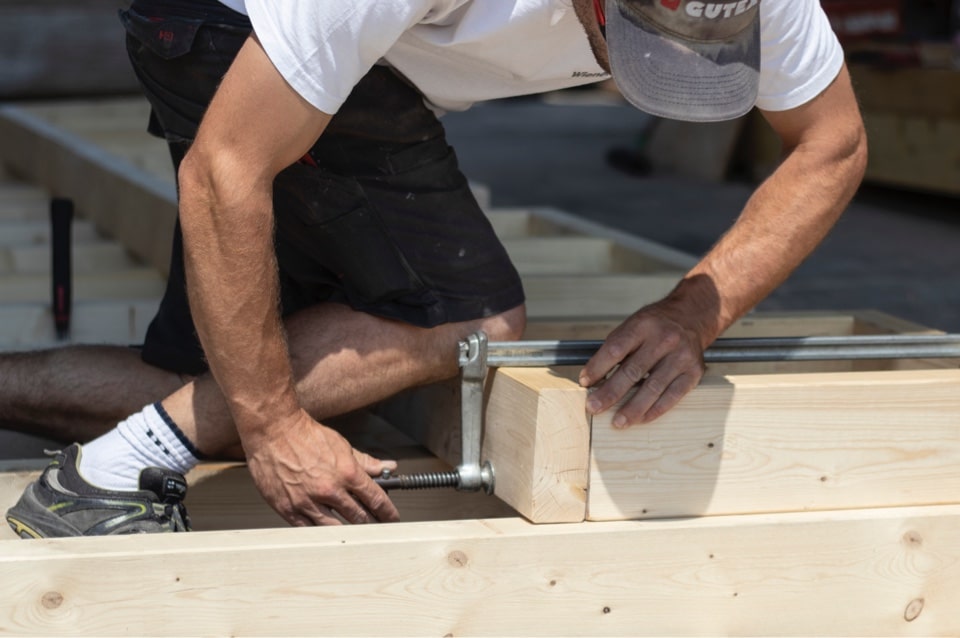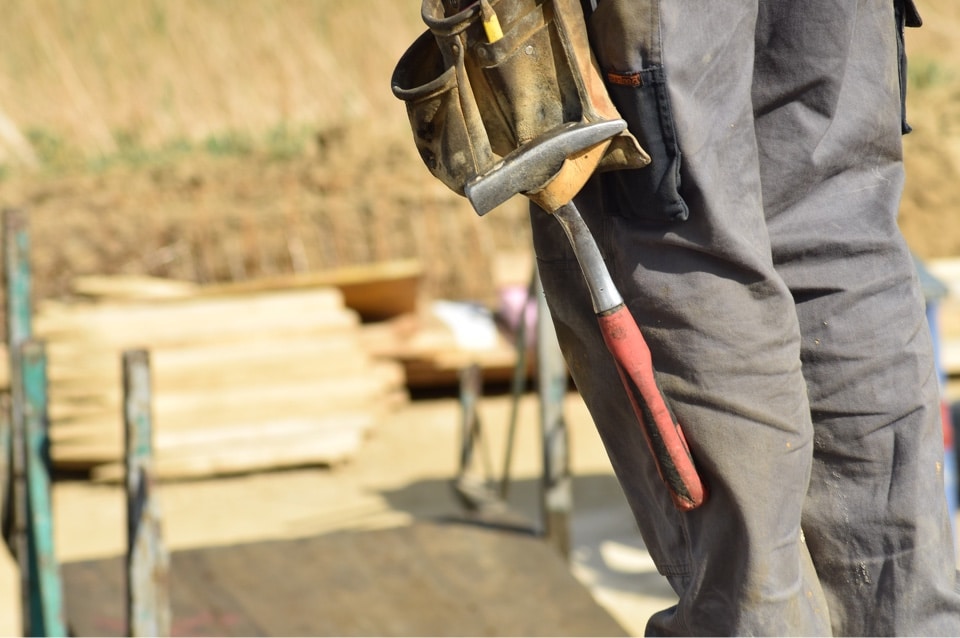JOINERY AND CARPENTRY – WHAT’S THE DIFFERENCE?

Carpenters and joiners are two similar jobs with small but essential differences. While they both work in the construction trades, they also have unique skills and specialisations.
If you like the idea of building things with your hands, becoming a carpenter or joiner might be right for you, but you’ll have to pick from these two trades.
Let’s explore the differences between carpentry and joinery to help you choose the right path for you!
As you read this blog, consider your preferred daily tasks and activities, and whether you want to advance your career after becoming a tradie.
Is a joiner the same as a carpenter?
Both carpenters and joiners need a Certificate III in Carpentry to do their job and both work with timber. But the two careers have different specialisations.
- Joiners tend to work more in a workshop setting. Here, they craft things like windows, cabinetry, stairs, trusses and doors.
- Carpenters tend to work onsite on fixed structures like home and building framing. They are involved in the construction, installation, and repair of wood fixtures and other parts of the structure that a joiner creates.
Carpenters can also sometimes work in the infrastructure construction industry, like helping to build roads, bridges and freeways.
Because carpenters and joiners have the same qualifications and do similar work, they can usually do either job–it’s just a matter of preference as to which job they get. Over time, they develop their expertise in one or the other.
How do I start to become a carpenter?
There is no better course out there for becoming a carpenter or joiner than the CPC30220 Certificate III in Carpentry (CPC30220). This qualification sets you up with the basic skills, knowledge and—most importantly—the experience you need to be a carpenter or joiner.
You study part time, usually in an evening class or online, while doing your apprenticeship with an employer. This combination of theoretical and on-the-job learning prepares you for a rewarding career, whether that be for an employer or in your own business.
The Certificate III in Carpentry is also a good foundation for further studies or other construction careers. For example, you could take the Certificate IV in Building and Construction (Building) (CPC40120) to become a licenced builder or start your own business. You could even do a Diploma of Building and Construction (Building) (CPC50220) which guarantees entry into a Victoria University bachelor’s degree.
How long does it take to become a carpenter?
Certificate III in Carpentry with the apprenticeship normally takes 3 years to complete, but this will depend on your progress and commitment.
The work component is full time, and the study component is about 2 hours per week in your own time.
How much are carpenters paid?
As a carpenter or joiner, you can earn a decent income in Australia.
Your exact income will depend on your location, employer, and your skill level. But for an average, let’s look at the Australian Government’s JobOutlook statistics.
According to official stats from the Australian Bureau of Statistics, carpenters and joiners earn about $1,358 per week
This translates to an annual income of about $70,00.
Why study carpentry at Builders Academy Australia?
We are one of the biggest and best registered training providers in Victoria that specialise in construction courses.
We’ve even won the Victorian Training Awards and been a finalist several times!
Because our motto is “builders training builders” and we focus on the construction industry, our trainers are the best in their fields and we have a broad range of industry connection.
Our courses prepare tradies and builders for what really matters—their careers.
Through our partner , we also offer construction courses in NSW and Queensland.
Summary: the difference between a carpenter and joiner
It’s true that carpenters and joiners do similar work. They even do the same qualification to gain their skills and knowledge—the Certificate III in Carpentry.
But there are some important differences. Carpenters tend to build on worksites, while joiners make building materials in workshops.
This means you’ll have a different lifestyle and workplace environment depending on whether you work as a carpenter or joiner. A carpenter will work outside a lot, whereas a joiner will be sheltered from the elements.
If you’re considering a job in one of these trades, you’ll be able to swap between the two. But if you want to become very good at one of them, it’s a good idea to stick to one to develop your expertise and industry connections.
Got questions about the CPC30220 Certificate III in Carpentry (CPC30220)? Give us a call today on 1300 534 363 (LEGEND) or complete the online form, and one of our course advisors will get in touch soon.
This article has been updated and republished on 6th March 2023


